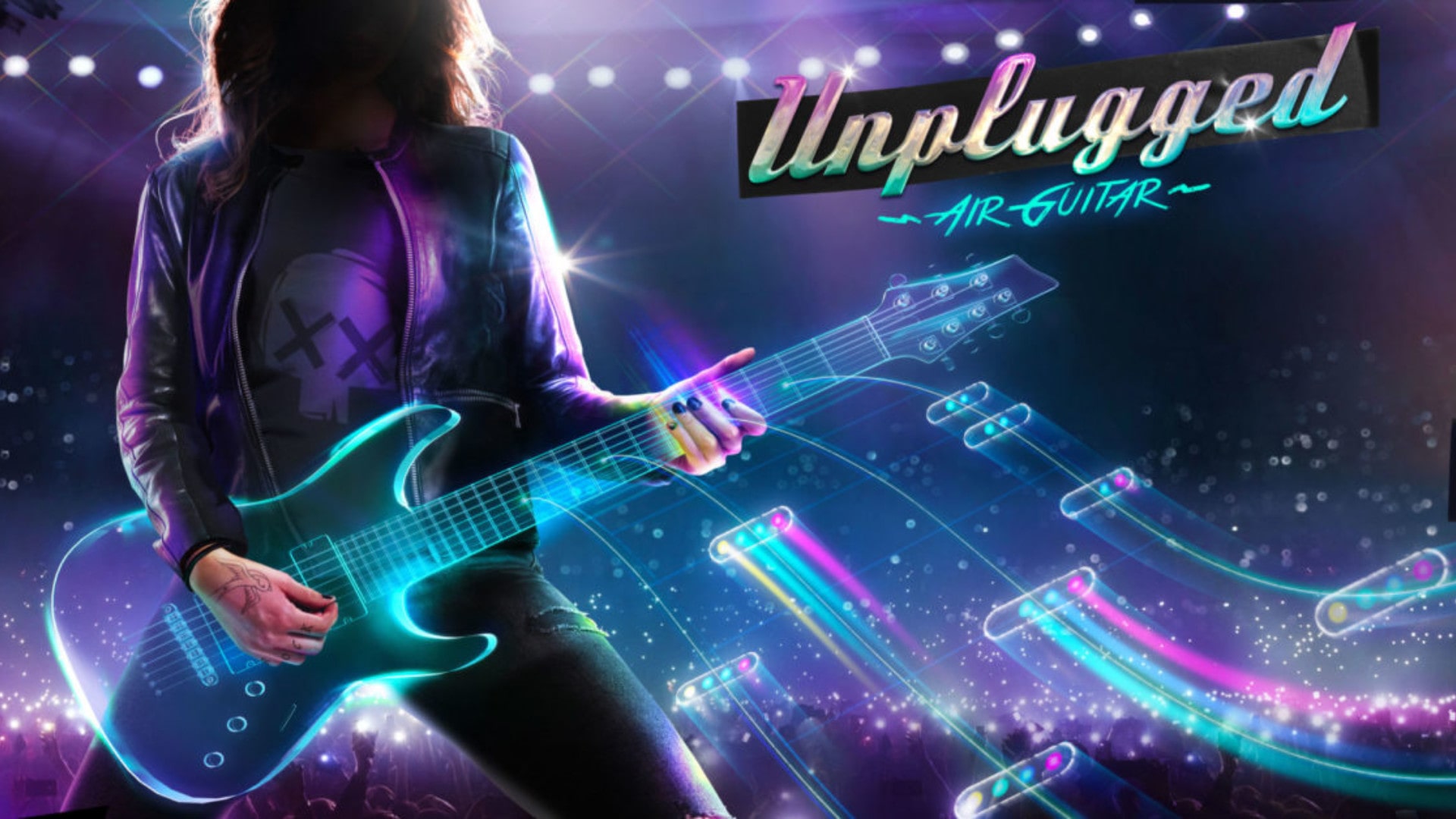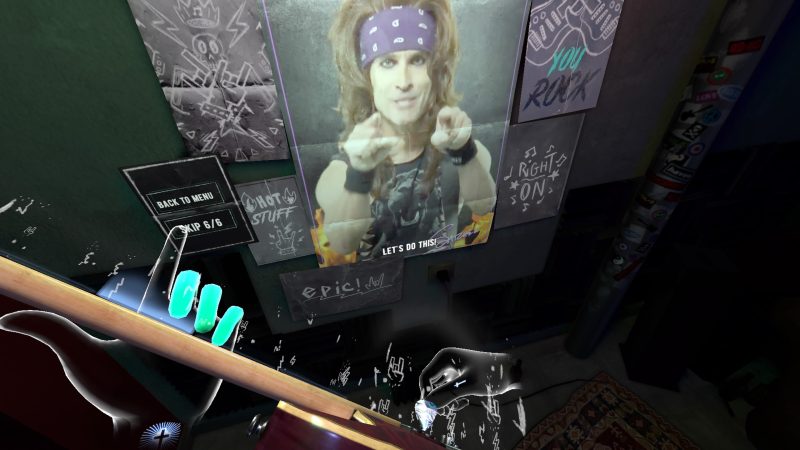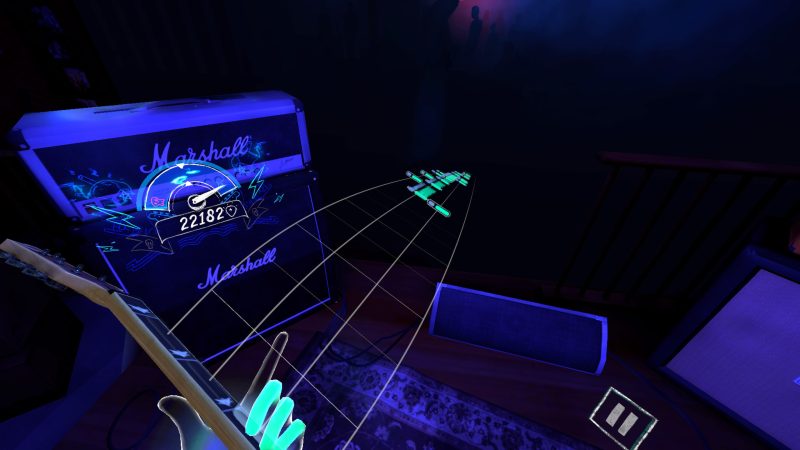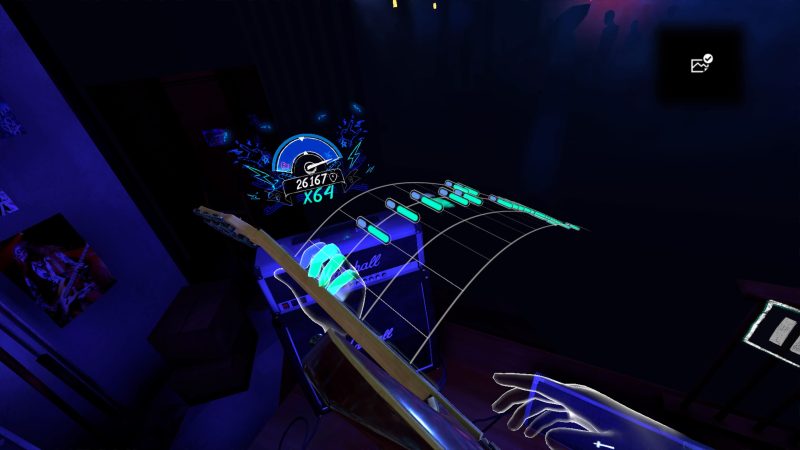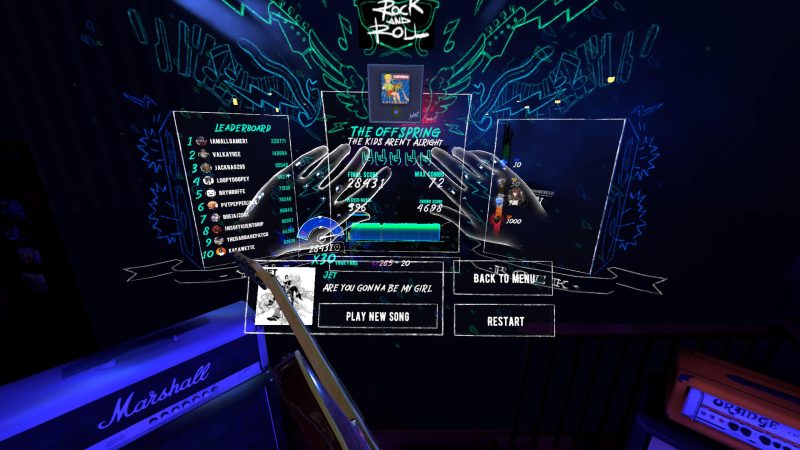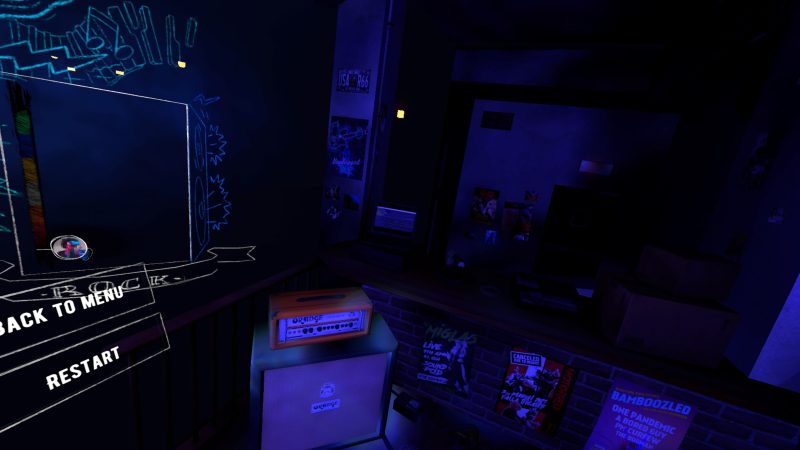Unplugged: Air Guitar Review (PSVR2) – We last saw a guitar game take hold as an industry sensation back when the PS2 roamed the Earth. Since then, almost all attempts to rekindle that same magic lived only half-lives at best.
Unplugged: Air Guitar takes a crack at filling that void with the help of the PSVR2 hardware. While the spokesman doesn’t do the game any favors, the gameplay sure does.
Unplugged: Air Guitar Review (PSVR2) – Re-kindle That Guitar Hero Magic
Get Ready To Rock
You pick up this game with one thing in mind: play guitar. With a simple concept comes a matching premise. The lead singer of Steel Panther, named Satchel, trains you to be a rockstar in between cheap jokes about you being a nerd.
Satchel comes across as awkward, and his humor lands maybe a quarter of the time. I got used to him, mostly because he reminded me of a family member that I had also gotten used to, but Satchel isn’t a universal personality. Just as a forewarning: Satchel is a weird one.
As you play, you unlock different venues, with each new venue including a larger audience. With this comes more interactivity with the audience. If you play well, they jump and cheer. If you play poorly, they boo and throw things at you.
Still, your general surroundings don’t offer much for you other than an occasional glance. This feels by design, like the game wants you focusing on your hands, with simple menus only meant to get you from one song to the next.
Air Guitar Excellence
The gameplay truly makes this game succeed. The notes flow in toward the neck of your guitar on a long musical staff complete with time bars to mark the beat. You can even move the neck around while playing, and the staff stays with your movement.
The song list uses cord-heavy songs. To complement this, you only press the L1 and L2 (or R1 and R2v if you’re left-handed), and your fingers stay together most of the time. Each note uses one or two target points.
This emulates how you hold a guitar rather nicely. In fact, it also leaves your thumb pressing flat against the controller handle much like it would on the guitar neck while playing.
There are four types of notes, the first being a normal note, which is framed by a rounded box. The next is a pull-off note, which doesn’t have the rounded frame.
Unlike the basic notes, you just place your fingers in the right place and don’t strum for these. Third, there are vibrato notes.
These have lingering streams of color behind the notes and ask you to slightly shimmy your hand up and down the neck. If you veer too far away from the base note, you lose potential points.
The last is a Virtuoso note, which lets you strum and pick random notes to your heart’s content.
The strength of this gameplay comes in how responsive it all is to your movements. Instead of fighting with controls, you get to focus on the music and the instrument you have in your virtual hands.
Unplugged may not be a hardware seller on its own, but it is quite a cool experience. If you miss the Guitar Hero or Rocksmith eras, this will help alleviate some of that longing.
Flat Instead of Sharp
Two hang-ups stand out for Unplugged, but thankfully they don’t break the core experience. The first is how the game initially positions the guitar relatively to your headset.
When a song loads up, the guitar appears at your waist. If you’re sitting, it could basically appear in your belly.
Thankfully, the game lets you grab the whammy bar to anchor the guitar where you choose before the song will start. Unfortunately, you can’t use the whammy bar during songs.
The second is how you unlock new songs. The track list consists of five different album collections. Some songs are available from each album right away, but others sit behind the feat requirements.
Unlocking the first couple come naturally, with their requirements being finishing any song with a good rating. The later albums ask you to play much harder versions of the songs and perform well.
This progression is steep, especially with such a small set of songs in the wings. DLC is planned for more music, so this might not be as big of a problem for future buyers. At release is a different story.
A third sticking point, on harder difficulties, the game asks you to twist your wrist to hit certain notes. Getting these to register properly takes very defined wrist movement, and even more so when sitting.
Sometimes it still doesn’t register, and several songs see you hopping back and forth between the normal notes and these twisted one.
It’s a motion you need to refine far more than any other motion the game asks of you. I place this here not because it’s hard but because the effort needed to register the twist isn’t natural.
Pulling it off still feels awesome, but getting to that point takes more work than some might want to put into the game.
Unplugged: Air Guitar Literally Rocks
Unplugged: Air Guitar gives the PSVR2 another strong rhythm game option that emulates that feeling of playing a guitar. It’s not authentic, but neither is playing an air guitar. Controls work nicely, and the flow of notes cater to the experience.
Initial guitar positions can be weird, and the difficulty spike can initially block you from accessing all the available songs. Still, with what’s on offer, $25 is a solid asking price for an experience like this.
Unplugged fills a gaming niche that’s been long neglected, and it does it well. It’s not a hardware seller on its own, but it makes for some tasty gravy.
Unplugged: Air Guitar is now available on PSVR2.
Review code kindly provided by publisher.
